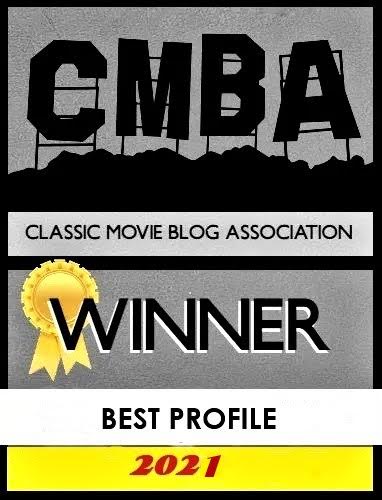
“I’m not ashamed of being from Wisconsin. Just of being from Kenosha. It’s a terrible place.” –Orson Welles
Born in Kenosha, Wisconsin, on May 6th, 1915, Orson Welles lived with his parents until they separated four years later. Afterward, both of his parents moved to Chicago, Illinois, with Welles’s father making a fortune as the inventor of a bicycle lamp. Welles’s mother played piano at lectures events for Dudley Crafts Watson, hosted by the Art Institute of Chicago. However, when Welles was nine, his mother died from hepatitis. Following the death of his mother, Welles was taken in by Watson, living at the Watson family home in Highland Park, Illinois.



Next, Welles lived in Chicago with his father and in Highland Park with Dr. Maurice Bernstein, a family friend. While living in a Chicago apartment, Welles attended public school nearby. His father struggled with alcoholism and uprooted both himself and Welles in favor of traveling to Jamaica and the Far East. Upon their return, his father purchased a hotel in Grand Detour, Illinois, which eventually burned down. Welles and his father were faced with moving away once again.
At Todd School, Welles studied under Roger Hill, an educator who allowed Welles to study topics of interest to him. As a result, Welles explored a passion for performance and worked as part of various stage productions there. He also executed his first radio performance through the Todd radio station, writing and appearing in an adaptation of a Sherlock Holmes tale.

At the same time, Welles’s relationship with his father was suffering. He vowed to stop seeing him, hoping that this would encourage his father to stop drinking. His father died of heart and kidney failure soon after, leaving Welles with a sense of guilt.
Welles graduated from Todd and was awarded a scholarship to Harvard University; however, he opted to travel instead and briefly studied painting at the Art Institute of Chicago. He also returned to Woodstock on occasion, considering it his home.

Over the years, Welles continued his travels, thanks to an inheritance. He arrived in Ireland, where he walked into a theater and insisted that he was a Broadway star. Though in disbelief, the manager was impressed and allowed Welles to make his professional stage debut at the Gate Theatre, opening the door to a variety of supporting roles and work in stage production.
Welles soon returned to the U.S. and initiated a writing project at Todd School, which would evolve into The Mercury Shakespeare. Welles became active in a network of writers and hoped to become part of a repertory theater company.
Soon enough, Welles’s first radio job was for The American School of the Air. In the same year as his first paid radio role, Welles produced a drama festival with the Todd School in Woodstock, inviting actors from the Gate Theatre to appear along with various New York stage actors. He would also film his first short, The Hearts of Age (1934), at a firehouse in Woodstock, in addition to performing at the Woodstock Opera House.
Welles frequently traveled from Woodstock to New York, where he formed relationships with actors who would later be an integral part of his Mercury Theatre. He was also active in many facets of radio, though often remaining uncredited for his work. However, it was Mercury Theatre’s 1938 radio adaptation of The War of the Worlds by H. G. Wells, that truly cemented Welles as a radio star. His performance and script detailing a Martian invasion was so convincing that it panicked audiences all over the nation.

Hollywood offers began to come in for Welles. Upon commuting from coast to coast, he signed a film contract with RKO in August of 1939, and transferred the production of his radio show to Los Angeles. Welles enjoyed creative control and the ability to have final cuts of his work. Though RKO rejected the first two film proposals from Welles, they agreed to Citizen Kane (1941), which would go on to receive high praise from film critics and become his most notable film. In addition to co-writing the film, Welles also produced and directed the film, garnering nine Academy Award nominations. Citizen Kane was followed by The Magnificent Ambersons (1942) and Journey into Fear (1943).

In 1943, Welles’s work for the radio shows Ceiling Unlimited and Hello Americans was complete, and he enjoyed the income from his films and radio roles. As a result, Welles was able to pursue his dream of organizing a show that combined circus acts and magic for the War Assistance League of Southern California. Welles invested much of his own money in the show, entertaining members of the service and raising funds for the War Assistance League.

The development of the show coincided with the resolution of Welles’s draft status in May 1943, when he was finally declared 4-F—unfit for military service—for a variety of medical reasons.
At intermission on September 7, 1943, KMPC radio interviewed the audience and cast members of The Mercury Wonder Show—including Welles and Rita Hayworth, who had married earlier that day. Welles remarked that The Mercury Wonder Show had been performed for approximately 48,000 members of the U.S. armed forces.

Welles and Hayworth divorced on November 10, 1947. Prior to his marriage with Hayworth, Welles was married to Virginia Nicolson for six years. After divorcing Hayworth, Welles would later be married to Paola Mori for thirty years. Each of his marriages produced one child. His children were Christopher Welles Feder, Rebecca Welles Manning, and Beatrice Welles.

In addition to launching a massively successful career in film, Welles later took on several television projects. One series was Orson Welles’ Sketch Book, featuring Welles drawing in a sketchbook and sharing anecdotes with the audience. Another serial included Around the World with Orson Welles, which showcased his travels throughout Europe. Welles returned to Hollywood and continued working on his own projects while making guest appearances for Dick Cavett, Johnny Carson, Merv Griffin, and many more talk show hosts.
On the evening of October 9, 1985, Welles recorded his final interview as part of the syndicated television program, The Merv Griffin Show, appearing with biographer Barbara Leaming. Welles returned to his home in Hollywood and worked into the early hours, typing stage directions for a project that he and Gary Graver were planning to shoot at UCLA the following day.
Welles died on the morning of October 10, 1985, following a heart attack. He was 70 years old. His ashes were interred in an old well on the Antonio Ordóñez Estate Grounds.
Welles lived with Dr. Maurice A. Bernstein at 1850 Kincaid St. in the Ravinia neighborhood of Highland Park during the late 1920s and 1930s. The present number of the home is 610 Kincaid St., Highland Park, Illinois.

After the death of his mother in 1924, Orson was taken in by Dr. Dudley Crafts Watson and lived with the family at Dr. Watson’s family home, “Trillium Dell.” The home remains in the Ravinia neighborhood at 291 Marshman Ave., Highland Park, Illinois.


While residing in Highland Park, Orson Welles reviewed opera performances at Ravinia for the Highland Park News when he was 13. During July and August of 1928, Welles wrote a column for the weekly local newspaper, the Highland Park News, called, “Hitting the High Notes.” The columns reviewed musical performances at Ravinia Park, an outdoor music venue for classical music and opera at the time. From June through September of 1930, Welles wrote a column called “Inklings” in the same newspaper. The Ravinia Music Festival is still a beloved outdoor music festival for Chicagoans to this day. Welles’s first performance on a stage was at Ravinia in a production of Our Town when he was three years old. Ravinia is located at 200 Ravinia Park Rd., Highland Park, Illinois.

In 2015, Woodstock, Illinois, had its fair share of centennial events in honor of Welles. Banners with Welles’s image hung throughout the downtown area, and several exhibits were put together in Woodstock’s Opera House and the Woodstock Public Library.





The Woodstock Opera House stands at 121 W. Van Buren St., Woodstock, Illinois, in Woodstock’s main square. It continues to host performances and features a rotating display of its history. In 2013, the stage was dedicated to Welles.





While the Todd School for Boys no longer exists, one last building does remain–Rogers Hall. It was built in 1910 and used primarily as a classroom building. Today, it is an apartment building located at 730 N. Seminary Ave., Woodstock, Illinois.



Kenosha, Wisconsin, also organized several events to celebrate the life of the prolific Welles, including cemetery walks, movie screenings, dramatic readings, trivia nights, and more. These events were part of the Orson Welles Centennial in 2015.
Welles’s parents are buried in Green Ridge Cemetery in Kenosha. It is located at 6604 7th Ave., Kenosha, Wisconsin. Welles attended both funerals. He vividly recollected that it was pouring rain at his mother’s funeral, which added to the sadness of the event and unfortunately colored his impression of Kenosha with melancholy.


Interestingly, it was also pouring rain when I visited Kenosha. Luckily, I planned on attending a screening of The Magnificent Ambersons at the Kenosha Woman’s Club and hearing a lecture by film historian Joseph McBride. This was my first time seeing the film, and McBride’s discussion supplemented the viewing substantially.


The birthplace of Welles still stands at 6116 Seventh Ave., Kenosha, Wisconsin The home has been split to accommodate several residents. There is a plaque in front of the home as well as near the doorway.
As of 2018, Woodstock dedicated a statue of Welles. It has been installed next to the Classic Cinemas Woodstock Theatre, located at 209 Main St., Woodstock, Illinois.








The home of Orson’s grandmother is located within walking distance at 711 61st Street. It is also privately owned.

Today, the town of Woodstock is best known for its annual Groundhog Day celebration, since the film Groundhog Day (1993) was filmed there. Many of the filming locations are marked with plaques, which I am sharing here if you are curious.
















Because of the town’s significance in Orson Welles’ life and its appearance in Groundhog Day, the town celebrates its legacy with both of these fun accomplishments in mind. In addition, Woodstock was once home to American cartoonist Chester Gould, who created the Dick Tracy comic strip. Tributes to Gould are also found throughout the town. One of my favorite spots in town is this massive mural, celebrating Welles, Gould, and Groundhog Day.











Indiana University’s Lilly Library houses Rita Hayworth’s makeup kit, which includes love letters from Welles inside. These were kept by Hayworth immediately following their wedding ceremony, as the couple was bi-coastal for the time being, due to work. The Lilly Library is located at 1200 E. 7th St., Bloomington, Indiana.
The Antonio Ordóñez Estate Grounds are located in Ronda, Provincia de Málaga, Adalucia, Spain.
There is a memorial sculpture of Welles located at Paseo de Blas Infante 1, 29400, Ronda, Spain. An additional statue of Welles stands in front of the Joker Centre at Ul. Mike Tripala 6, 21000, Split, Croatia.
A War of the Worlds monument, bearing Welles’s likeness, stands at 218 Cranbury Rd., West Windsor Township, New Jersey.
Welles has two stars on the Hollywood Walk of Fame for his work in motion pictures at 1600 Vine St. and radio at 6552 Hollywood Blvd., Los Angeles, California.
This post was nominated for the Best Profile of a Classic Movie Performer or Filmmaker by the Classic Movie Blog Association in 2016.







